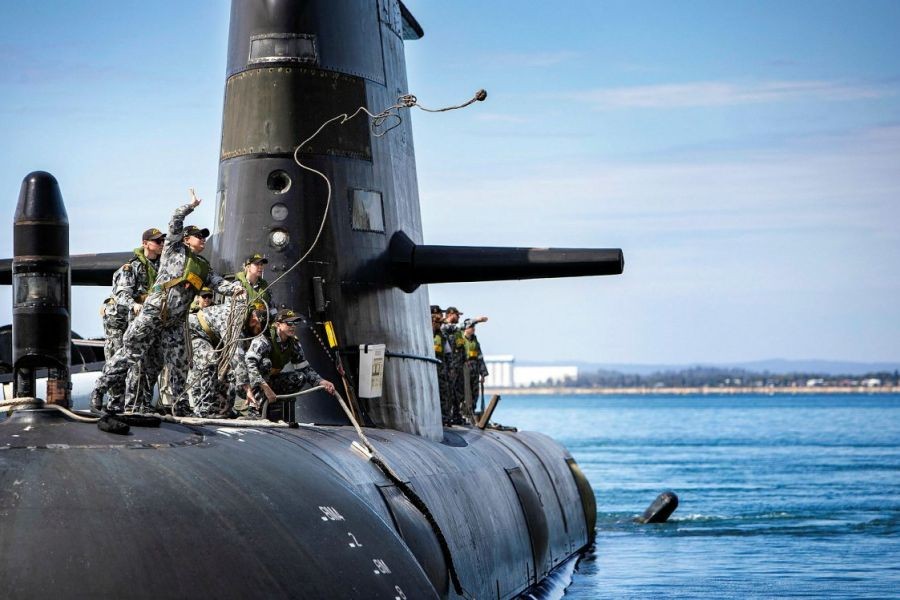The Australian Defence Force (ADF) has long been a cornerstone of the nation's security strategy, yet recent discourse suggests that it may be facing the dual challenges of being overstretched and underfunded. This article delves into the intricacies of these claims, exploring the impact on national security and broader implications for Australia’s role in global geopolitics.
Understanding the Overstretch: Strategic and Operational Demands
Australia's strategic environment has become increasingly complex, with growing regional tensions in the Indo-Pacific and the need to support international peacekeeping missions. According to the 2023 Defence Strategic Review, the ADF is expected to maintain operational readiness across a wide array of domains, including cyber warfare, maritime security, and air defence. The need for versatility and rapid deployment has placed unprecedented demands on personnel and resources.
Regional Tensions and International Obligations
Australia's geographical proximity to the South China Sea and ongoing commitments to alliances such as ANZUS and AUKUS require a robust military presence. The Australian Bureau of Statistics (ABS) reports that defence spending has increased by only 1.5% annually over the past decade, failing to keep pace with the operational demands. This imbalance suggests a growing strain on the ADF's capacity to fulfill its international and regional commitments effectively.
Case Study: The Solomon Islands Mission
In 2022, the ADF was deployed to the Solomon Islands to address civil unrest. While the mission was deemed a success, it highlighted the challenges of rapid deployment and sustainability in overseas operations. The ADF had to stretch its resources thin, impacting other areas of strategic interest. This situation underscores the need for increased funding to support multi-theatre operations without compromising domestic defence capabilities.
Financial Constraints: The Underfunding Dilemma
Despite an increasing need for a well-equipped and versatile military force, funding constraints have hindered the ADF's ability to modernize its capabilities. According to the Australian Treasury, the defence budget constitutes only 2% of GDP, which is below the NATO-recommended threshold of 2.5%. This shortfall limits the ADF's ability to invest in advanced technology and infrastructure, crucial for maintaining a competitive edge.
Impact on Modernization and Readiness
The ADF's modernization programs, such as the acquisition of new submarines and fighter jets, face delays due to budgetary constraints. The Reserve Bank of Australia (RBA) notes that inflationary pressures have further eroded purchasing power, complicating efforts to acquire state-of-the-art equipment. Without adequate funding, the ADF risks falling behind in technological advancements, impacting national security.
Case Study: The Future Submarine Program
The Future Submarine Program, intended to replace the aging Collins-class submarines, has faced significant delays and cost overruns. Originally projected at $50 billion, the program's costs have ballooned to over $80 billion, according to the Australian National Audit Office. This financial strain highlights the challenges of balancing fiscal responsibility with the need for advanced military capabilities.
Pros vs. Cons: Balancing Defence Needs and Economic Realities
Pros:
- Enhanced Security: A well-funded military ensures national security and regional stability.
- Technological Superiority: Investment in modern technology enhances operational effectiveness.
- Global Influence: A robust military supports Australia’s role in international alliances and peacekeeping missions.
Cons:
- Economic Trade-offs: High defence spending may divert funds from essential public services.
- Resource Allocation: Limited funding necessitates difficult choices in resource allocation.
- Debt Implications: Increased spending may lead to higher national debt.
Expert Opinions and Thought Leadership
Dr. John Blaxland, a strategic studies expert at the Australian National University, emphasizes the importance of aligning military capabilities with strategic objectives. He suggests that Australia should focus on developing niche capabilities tailored to regional security needs. Similarly, former Defence Minister Linda Reynolds advocates for a comprehensive review of defence funding priorities to ensure sustainable growth and modernization.
Common Myths and Mistakes
Myth: Increased Defence Spending Equals Better Security
Reality: While funding is crucial, strategic allocation and efficient use of resources are equally important for enhancing security. Overspending on non-essential projects can undermine core defence capabilities.
Myth: Technological Advancements Alone Ensure Military Superiority
Reality: Human capital and strategic alliances play a vital role in maintaining military superiority. Advanced technology must be complemented by skilled personnel and strong partnerships.
Myth: The ADF Can Operate Independently of Allies
Reality: Australia's strategic alliances are integral to its defence strategy. Collaborative efforts enhance operational capabilities and provide critical support in international missions.
Future Trends and Predictions
Looking ahead, the ADF is expected to prioritize cyber capabilities and unmanned systems to address emerging threats. According to a Deloitte report, global military expenditure is projected to increase by 3% annually, with a focus on digital transformation. Australia must align its defence strategy with these trends to remain a key player in regional security.
Conclusion
As Australia navigates an increasingly complex security landscape, addressing the challenges of an overstretched and underfunded military is crucial. Strategic investments in technology, personnel, and international partnerships will ensure the ADF remains capable of meeting both current and future threats. The time for action is now—Australia's security and global standing depend on it.
People Also Ask (FAQ)
How does military underfunding impact Australia's security?
Underfunding limits the ADF's ability to modernize and maintain readiness, potentially compromising national security. Strategic investments are needed to address emerging threats.
What are the biggest misconceptions about the ADF's capabilities?
One common myth is that technological advancements alone ensure superiority. In reality, skilled personnel and strong alliances are equally vital.
How can Australia improve its defence funding strategy?
Experts recommend a balanced approach, prioritizing strategic investments in technology and personnel while leveraging international partnerships for support.
Related Search Queries
- Australian military funding challenges
- ADF modernization programs
- Impact of defence budget on national security
- Regional security threats to Australia
- Future trends in military technology
- Australia's role in international alliances
- Defence spending vs. public services
- Strategic priorities for the ADF































